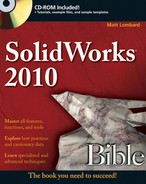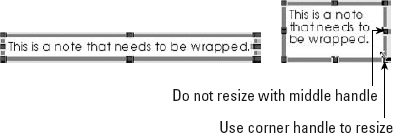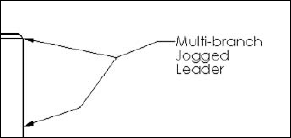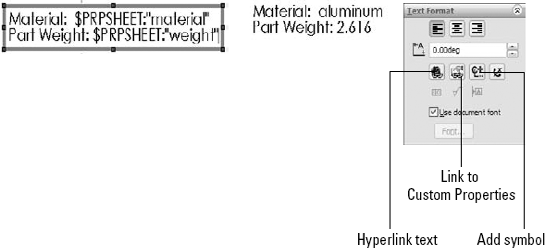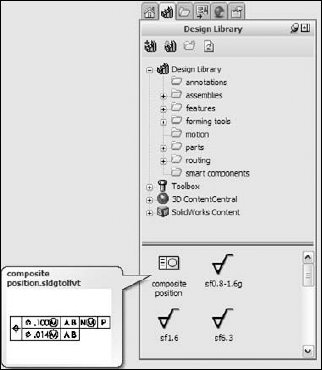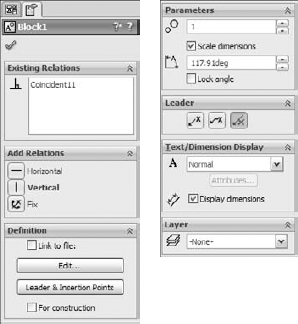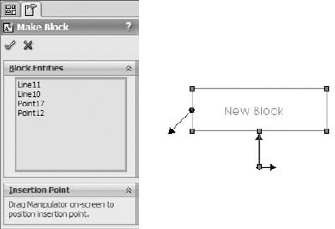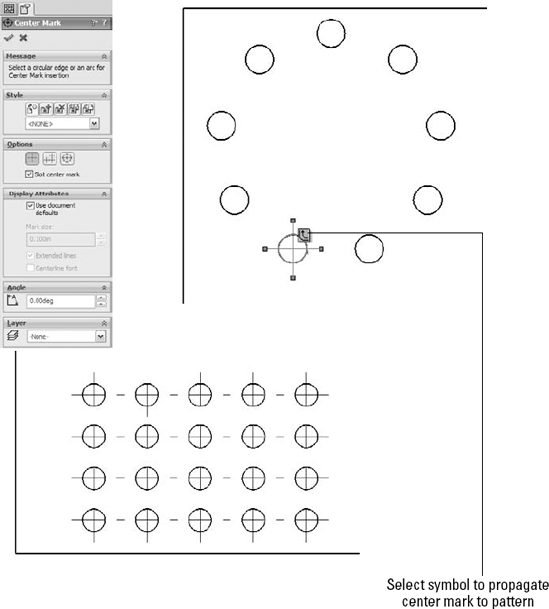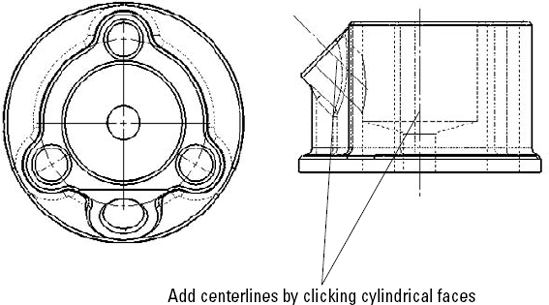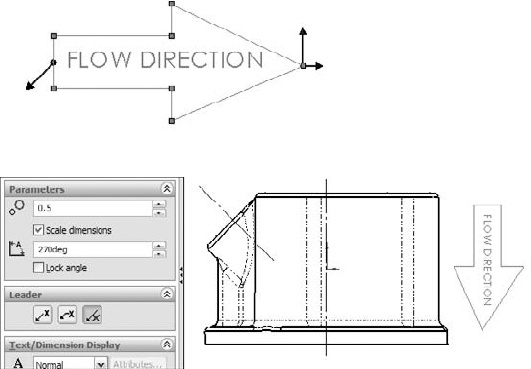Annotations and symbols are a major component of communicating a design through a drawing. SolidWorks has several tools available to help you manage these entities to make engineering drawings look good and communicate effectively.
Sometimes users have difficulty working through some of the interfaces in SolidWorks. This is not necessarily the fault of the software, but is often because users may not fully understand how the workflow of a particular feature is supposed to function. The Model View interface from the last chapter is one that can be confusing until you have been through it a few times and gain a more intuitive feel for how it works.
Understanding the workflow is paramount to being able to use the software efficiently. I sometimes find myself using the annotations clumsily, and sometimes wind up with blank notes, double notes, or extra lines at the ends of notes. After using the tool a few times, I get back in the groove.
For these reasons, I have added some step-by-step suggestions here to help you create an efficient workflow with annotations.
Follow these steps to create a note:
Click the Note toolbar button on the Annotations toolbar.
Click in the graphics window where you want to create the note or click an entity that you want the note leader to point to, and then click where you want the note.
Type the note. Press Enter at the end of a line, or, if you intend to force the note to wrap later, just allow the line of text to be as long as it wants to be. While you create the note, the text box expands to the right until you press Enter, and it expands down every time a line is added.
At the end of the last line of the note, do not press Enter again (this creates extra lines), but you may press Esc. Esc gets you out of the note and ready to place a new note. When you press Esc twice, you get out of the note you were typing, and then get out of the Note command altogether.
Another way to finish the note is to click the mouse outside of the text box. After that, if you are done, press Esc. If you want to continue with another note, click again to place it, and start typing. If you want to place the same note as the first one again, the text is already there, so click a second time.
SolidWorks can make use of any TrueType fonts that Windows will accept. This includes symbol, non-English, and Wingding fonts. SolidWorks does not use true monofonts like AutoCAD because they do not have width information. Some AutoCAD monofont look-alike fonts are installed with SolidWorks that do have a very narrow width, and are shaped like some of the monofonts.
In the Customize dialog box (Tools
Text boxes enable you to limit the size, particularly the width, that a note can occupy. This enables notes to wrap in tight spaces on title or revision blocks, as well as other places.
You can size text boxes immediately after placement, even while they are blank; the text then wraps as you type it. The text box expands downward automatically. Blank text boxes can be left on the drawing to provide a placeholder for future text. The blank text box has a rectangular border that contains an X, both of which are removed when you add text. If spaces are added to a text box, the text box becomes invisible, although you can select it if you know where it is. When you move the cursor over the text box, the cursor displays the note symbol.
While typing a note, it is not possible to make the note box smaller using the middle handle on the right end of the box; you can only stretch it larger. Using any corner handle, as shown in Figure 22.2, you can make the box taller, wider, or narrower. The note box will not resize smaller if the text string it contains does not contain spaces.
If a custom property value is used to populate a note and you select the Annotation Link Variables option in the Views dialog box, when you activate the text box to resize it, the text value will go away and the link variable will be displayed. This makes it difficult to dynamically resize the box to fit the note, so it might be best to deselect the Annotation Link Variable option before placing and sizing notes.
When you start to place a note, a preview shows the text box with or without a leader depending on the position of the cursor. If the cursor is over a blank section of the drawing, the note is placed without any leader. If the cursor is over a face, edge, or vertex, then a leader is added using the arrow found in the Attachment dialog box at Tools
Figure 22.3 shows the preview that is displayed by the cursor when you place a note over a face, an edge, and blank space on the drawing.
You can also change settings for bent leaders by choosing Tools
Single-clicking inside an active text box places the cursor between letters, as expected. Double-clicking inside an active text box selects the entire word that you click, again as expected. Ctrl+A selects all the text inside a text box. If you double-click an existing note to activate it, the entire contents are highlighted immediately. You also cannot drag-and-drop selected text to move it within a text box. However, you can Ctrl+C, Ctrl+X, and Ctrl+V the text.
To format the entire note, do not activate the text box; instead, only select the note, and apply the setting to the entire note rather than to selected text within the note.
To add a leader to a note that was created without a leader, click the note and select the leader options in the Leader panel of the PropertyManager, as shown in Figure 22.4. After you add the leader, you can reposition the handle at the end of the leader to attach it to an entity on the drawing.
You can also attach multiple leaders to notes. To create a new note with multiple leaders, pre-select the entities that the leaders are to be attached to, and then click the Note toolbar button.
To add a leader to an existing note, first click the note, and then Ctrl+drag the handle or small dot on the end of a leader to the second location. A note with multiple leaders is shown in Figure 22.5. To remove one of multiple leaders from a note, click the handle at the end of the arrow and press Delete.
Jogged leaders have come a long way since their introduction many releases ago. You can switch a regular leader to a jogged leader by selecting an option in the PropertyManager. In Figure 22.4, the middle icon in the top row is the Jogged Leader icon. The icon to the left simply turns on the default leader, and the icon to the right turns off leaders altogether.
Once you activate the jogged leader option, you can add a jog from the leader right mouse button (RMB) menu. Notice in Figure 22.6 that two options give you control over the jogged leader — Insert New Branch and Add Jog Point.
Selecting the Add Jog Point command adds a new handle to the leader that you can move around. You can add multiple jog points to the leader.
The Insert New Branch command enables you to create a new jogged leader that ends in another arrow from the selected point. This arrangement with multiple branches in a jogged leader is shown in Figure 22.7.
For notes, a style can apply a font, an underline, bold formatting, or any other setting from the Formatting (Fonts) toolbar to a note.
To create a note that uses the style setting from another existing note, pre-select the existing note with the style to be copied before starting the Note command; SolidWorks applies the style to the new note.
Warning
Sometimes adding a style to a note can make other changes that you may not expect, such as deselecting the leaders if a note has multiple leaders. In particular, if the style is made from a note with a jogged leader, then it deselects leaders for regular multiple leaders. Styles that are created from regular leader notes do not deselect jogged leaders.
Making a change to the leader of a note after you apply the style removes the style from the note, although the formatting remains. This does not apply to adding multiple leaders, only to changing the type of leader.
Applying a style may also remove the ability of the text to wrap, as well as any changes to the text box shape. You cannot move the corner of a text box of a note to which you have applied a style.
Styles exist only in the document in which they were created, but they can be shared to other documents by saving the style out as a separate file. Note styles use the extension *.sldnotestl. Once you save the style, you can load it into other documents. The Style panel of the Note PropertyManager interface is shown in Figure 22.8.
Annotation types that can use styles are
Note
Dimension
Weld Symbol
Surface Finish
Datum Feature
Datum Target
Balloon
Auto Balloon
Stacked Balloon
Center Mark
Note
Styles before the 2009 release were called Favorites. The file type for note favorites was *.sldnotefvt. If you run across any of these legacy file types, you will at least know what they are. When loading styles, the Open dialog box will recognize and use both the new file type and the legacy file type.
The Style panel contains the following buttons:
Styles can be loaded into document templates so that for every document created from the template, those Styles will be available.
You can link notes to custom properties. The custom properties can be from the drawing, or from the model that is referenced by the drawing. I mention this kind of link briefly in Chapter 20, but discuss it more thoroughly here.
Figure 22.9 shows a note on a drawing with custom property links pulling data from the model shown on the drawing. To add these links, driven by the syntax $PRPSHEET:"material", click the icon indicated in the image to the right in Figure 22.9.
In this case, text has been combined with custom properties, but custom properties can also appear alone. To access the Custom Properties interface, choose Tools
When you activate the note, you may want to see the syntax, or you may want to see the actual text value of the custom property. You can find the setting that controls which one is displayed by choosing View
Hyperlinking text is sometimes useful on drawings to provide a link to reference documentation, specification, test results, and so on. The first button in the third row of the Text Format panel of the Note PropertyManager enables you to add a hyperlink to text in the note. Figure 22.9 shows this panel. Either copy the URL to the hyperlink dialog box that appears, or browse to it from the dialog box.
Notes and symbols are regularly combined in SolidWorks. Symbols are discussed more fully later in this chapter, but are mentioned here because of the frequency with which they are used with notes. In reference to Figure 22.9, the image to the right shows the Text Format panel, which contains a button to the interface where you can add symbols.
Blocks in SolidWorks can contain sketch elements and notes. When used in drawings, blocks have several common uses, including the following:
You can use standard note blocks for tolerances, disclaimers, or default requirements.
You can put together a mechanism in 2D where each block represents a part.
You can use flow direction for fluid systems.
You can use drawing stamps such as "Not For Release," "Preliminary," "Obsolete," and so on.
You can use symbols for schematics that can be snapped together.
You can save drawing formats as blocks to make them easier to place as a single entity.
Like styles, blocks reside in the document in which they are created, but you can save them out to a *.sldblk file, load them into other documents, and save them as a part of a document template.
Each block has an insertion point, which snaps to any sketch entity point, even if it is in another block. This makes schematics easy to snap together. If the default insertion point is not the point that you need to snap to the other geometry, then you can place the block anywhere on the drawing and drag the point that needs to snap.
Once blocks are snapped together, to detach them from one another, you can click the point at which they touch; a Coincident sketch relation displays in the PropertyManager. Deleting the sketch relation enables you to drag the block away from the other geometry.
When blocks are inserted, you can control several options in the PropertyManager. This function may be somewhat hidden because it does not appear automatically when you place the block. After you place the block, SolidWorks wants you to place another copy of the block. If you press Esc to cancel out of placing additional blocks, the first placed block is not selected, so the PropertyManager does not display. Figure 22.11 shows the Block PropertyManager.
Following is a list of sketch relations linked to the block.
Existing Relations. This panel lists the sketch relations that are linked to the block. These may cause the block to not move properly when you drag it. This feature is most helpful when the block is being used as a representation of a part in a simulated 2D mechanism.
Add Relations. This panel enables you to quickly select sketch relations to apply when placing blocks.
Definition. Blocks can be linked to an external file, which enables all linked instances of a block to be updated at once, even if they are being used in other drawing documents. The path box for the Link to File option only displays if you select the check box.
The Edit button refers to editing the block. A toolbar button also exists for editing blocks. Clicking the Leader & Insertion Points button enables you to edit both of the controls. You can select the For Construction option to change the entire block to construction entities.
Parameters. The top field with the two circles to the left controls the scale of the block. This number affects the entire block, including the text. You also have the option to scale dimensions, so that the dimension text size (not the dimension value) increases with the overall block scale.
The Lock Angle option refers to the rotation of the block. If the Lock Angle option is not selected, then you can rotate the block if one point on it is coincident to a stationary object, such as a vertex in a drawing view.
Leader. You will recognize these options from the Notes leaders. The leader is attached to the block where the angled black handle was placed when you created the block. You can edit the leader connection and insertion points by clicking the Leader & Insertion Points button on the Definition panel.
Text/Dimension Display. The Display Dimensions option controls whether or not any notes and dimensions in the block are displayed or hidden.
Layer. You can assign most entities on drawings to layers, which in turn have controls for items, such as line type, color, and visibility.
By default, when you create a block, the Insertion Point panel of the PropertyManager does not expand. If you expand this panel, the blue Origin symbol represents the insertion point that is attached to the cursor during block insertion, as shown in Figure 22.12. The angled line hanging off the left side of the block is the leader attachment point for the block. You can also drag this line around the block and snap it to sketch geometry. By default, this block does not use a leader, but if one is required, then you can select when you place the block.
Sketch blocks are covered in some detail in Chapter 3. This chapter is limited to a discussion of blocks that may be found on drawings rather than those used in model sketches or Layouts.
The Edit Block toolbar button on the Blocks toolbar
The Edit button in the Block PropertyManager
Choosing Tools

From the RMB menu of the block in the Blocks folder in the drawing FeatureManager
The standard edit function gives you access to the sketch and note elements that make up the block.
SolidWorks symbols are different from symbols that are a part of a font family. SolidWorks symbols fall into several categories, including weld, surface finish, hole, modifying symbols, GD&T (geometric dimensioning and tolerancing), and several flag symbols. You can also construct custom symbols.
You can use symbols in notes and dimensions. They also are an intrinsic part of weld symbols and surface finish symbols. Hole Callouts use symbols extensively, as do GD&T frames.
Figure 22.13 shows the Text Format panel from the Note PropertyManager and the Dimension Text panel from the Dimension PropertyManager. Both of these interfaces give you access to the symbol library.
You can create custom symbols in SolidWorks, but creating them may not be as simple as you expect. In the langenglish subfolder of the SolidWorks installation directory is a file called Gtol.sym. This file stores the representations of all the SolidWorks symbols. It is also where you can create symbols of your own. You can edit the file in Notepad.
Be warned, however. Unless you enjoy writing scripts for the command line, or you are a fan of DOS 5.0, you may not want to create custom symbol projects. The format for creating symbols is simple enough, but it is what you might call somewhat arcane. It is effective at creating line-art symbols that can be used with text and can even be used to contain text. If you are a little inventive with this, you can create interesting shapes that integrate with your notes and dimensions.
Keep in mind that this topic does not appear in the Help files, but all the instructions you need are inside the file itself. You may have to experiment a little to discover what the rules are in terms of making shapes outside of the limits of the 1X1 matrix. It is probably easier to create the geometry using Blocks functionality, but blocks cannot be inserted into text notes as easily as symbols.
Center marks propagate well to patterns, and you can dimension to them individually. You can rotate center marks in views where they need to be referenced from an edge that is not horizontal. You can also place center marks into layers.
This tutorial shows you how to use some of the tools that were discussed in this chapter. It does not cover every feature, so you should explore a little on your own and not necessarily follow the instructions exactly. Start here:
From the CD-ROM, open the file named Chapter 22 –
Tutorial.slddrw. This is a drawing file with views of the part from Chapter 21, but it does not contain dimensions or annotations.Click the Center Mark tool on the Annotations toolbar. (If the button is not there, then choose Tools

Activate the Centerline tool to add two centerlines to the right view, in the lower-left area. Change the view display style to Hidden Lines Visible. Select the cylindrical faces for each feature to place the centerlines. Click the vertical centerline and drag the ends past the edges of the part.
Select the edge that is indicated in Figure 22.17, and initiate a note from the Annotations toolbar. Type the text shown, all in one line. You can place the degree and diameter symbols from the symbol library, which you can access using the indicated button in the PropertyManager. Both symbols are in the Modifying Symbols library, also shown in Figure 22.17. Drag the lower-right corner of the text box to make the text wrap as shown.
Draw an arrow with a text note inside it, as shown in Figure 22.18. Make the sketch and text into a block by window-selecting all of it and clicking Make Block from the Blocks toolbar, or by choosing Tools

Place the block using the Insert Block function, so that the block is to the right of the right view. Once you place it, press Esc to cancel the placement of more blocks. Then select the block to activate the PropertyManager. Deselect the Lock Angle option, and set the angle to 270 degrees.
Balloons support mainly assembly drawing type functions. This tutorial steps you through some of these to give you familiarity with the tools.
Open the
Ch 22folder on the CD-ROM, and copy the file namedinch B.drwdotto your template folder. If you don't know where your templates are, check for them by choosing Tools
Open the assembly named Chapter 22 –
SF casting assembly.SLDASM, and click the Make Drawing From Part/Assembly toolbar button (under the New icon in the title bar toolbar). As the template, use the inch B.DRWDOT drawing template that you copied into your template path in Step 1. This should automatically create a four-view drawing of the small assembly.
Click on one of the balloons, and try to reconnect the arrow to a different location on a different part. Notice the number in the balloon changes. If the balloon won't relocate to the face of a part, drag it to an edge. You can even drag the attachment point to another part in another view. Leave the balloon attached to one of the pipes coming out of the assembly in the isometric view. The balloon should have the number 2 in it.
With the balloon used in the last step still selected, use the Balloon PropertyManager, shown in Figure 22.19. Click the box next to Quantity, and notice "2 X" shows up next to the balloon. Try some of the Placement and Denotation options to see what you prefer.

Place the cursor between the words THE PIPE, and click the balloon with the 3 in it. This places the balloon inside the text. See Figure 22.20.
Type another note in empty space on the drawing that says, for example, "This is another use of the balloon." With the text box still active, clear the highlighting and then re-highlight only the word "use." In the PropertyManager, expand the Border panel, and select Circular from the top drop-down list. This puts a balloon around the word "use."
Annotations and symbols in SolidWorks have many options for connection, creation, and display. Recent releases have brought major improvements to text box–driven annotations. Custom properties and hyperlinks enable the user to populate drawing annotations with content and links to content. Sharing styles in templates is a great idea for readily available note styles.
Blocks have several flexible uses and can be updated from external files across many documents. Their use for simulating mechanisms, piecing together schematics, and annotating drawings, in addition to the Belts and Chains functionality discussed in Chapter 13, make blocks one of the most flexible functions available.
